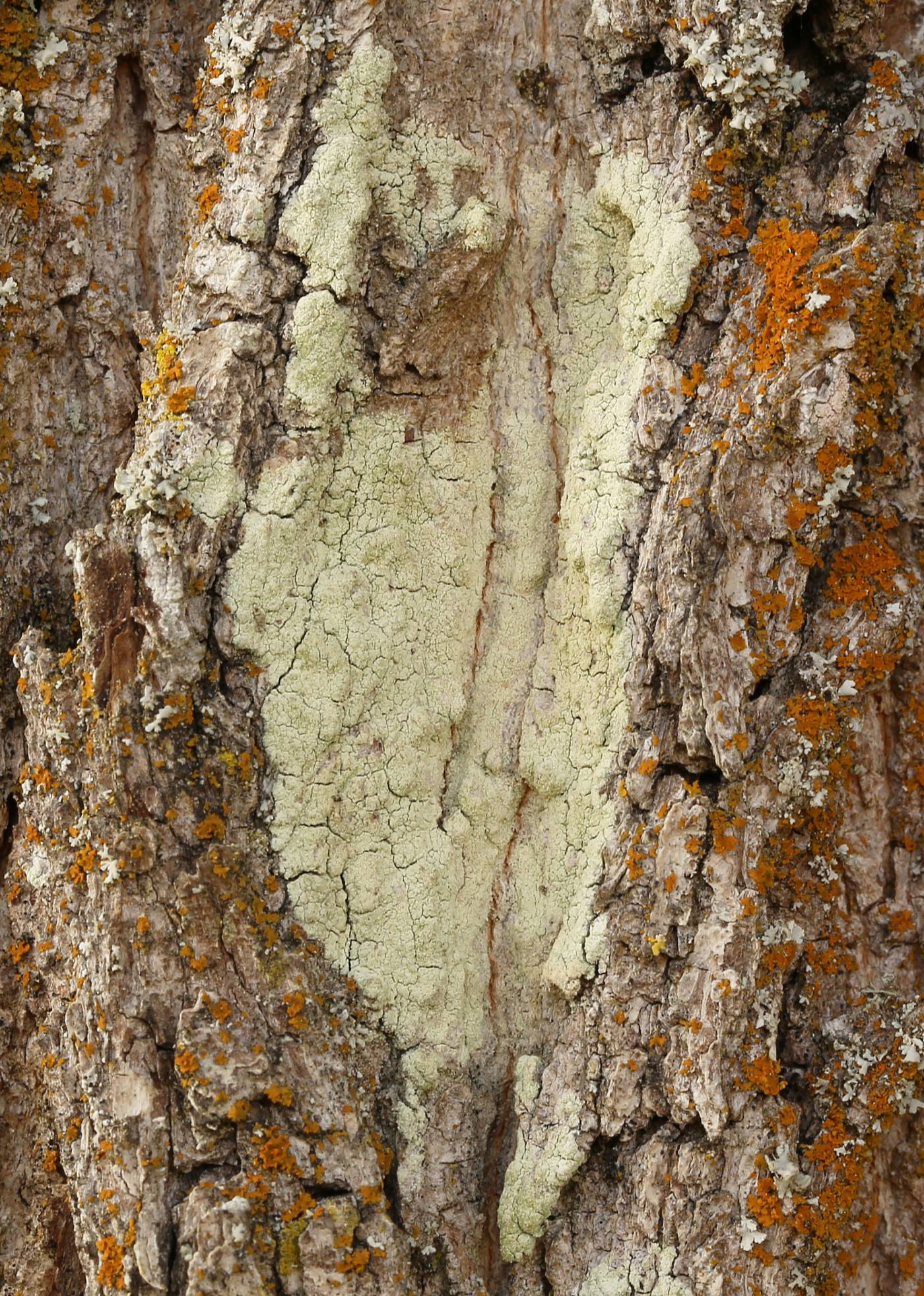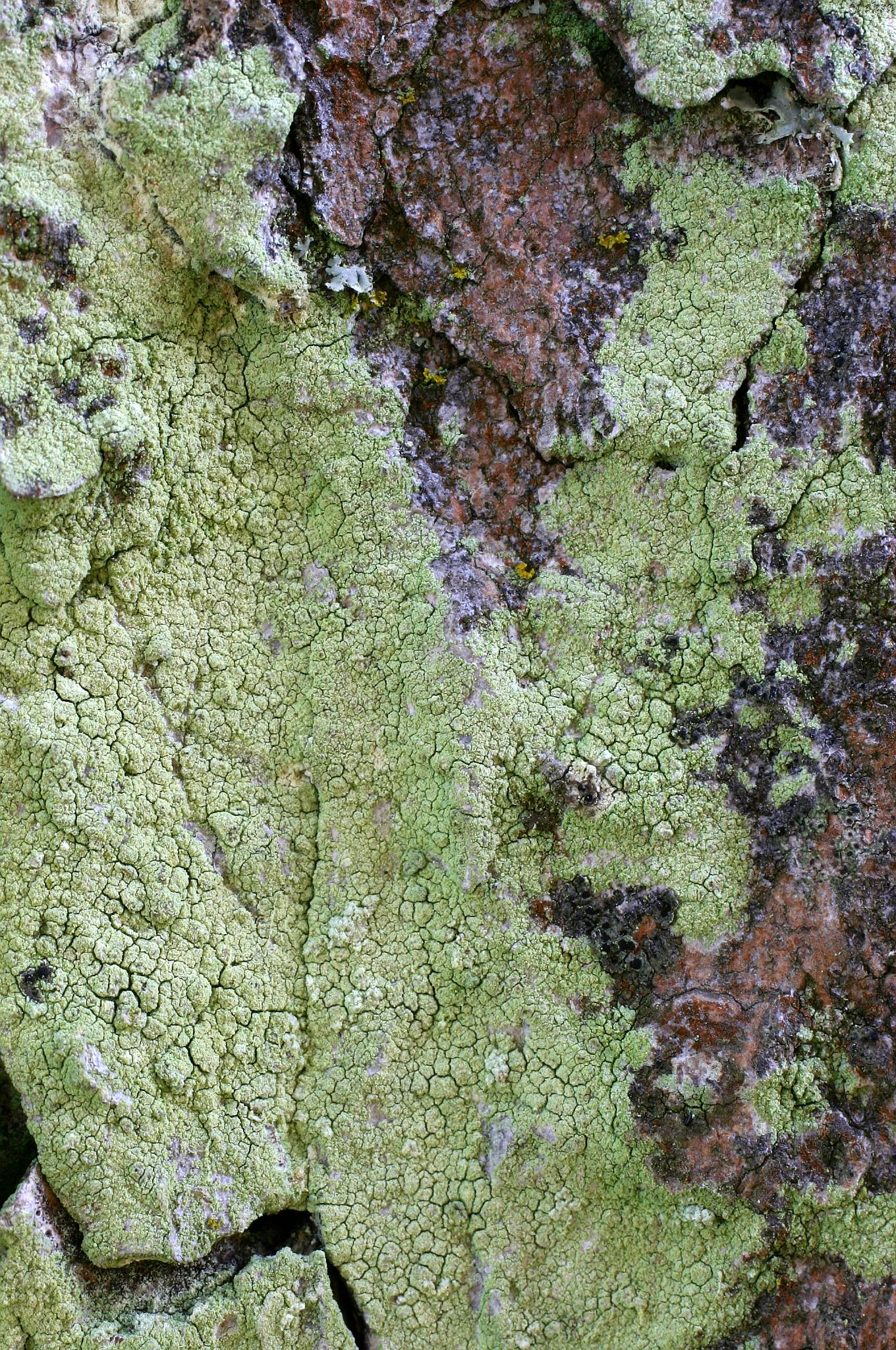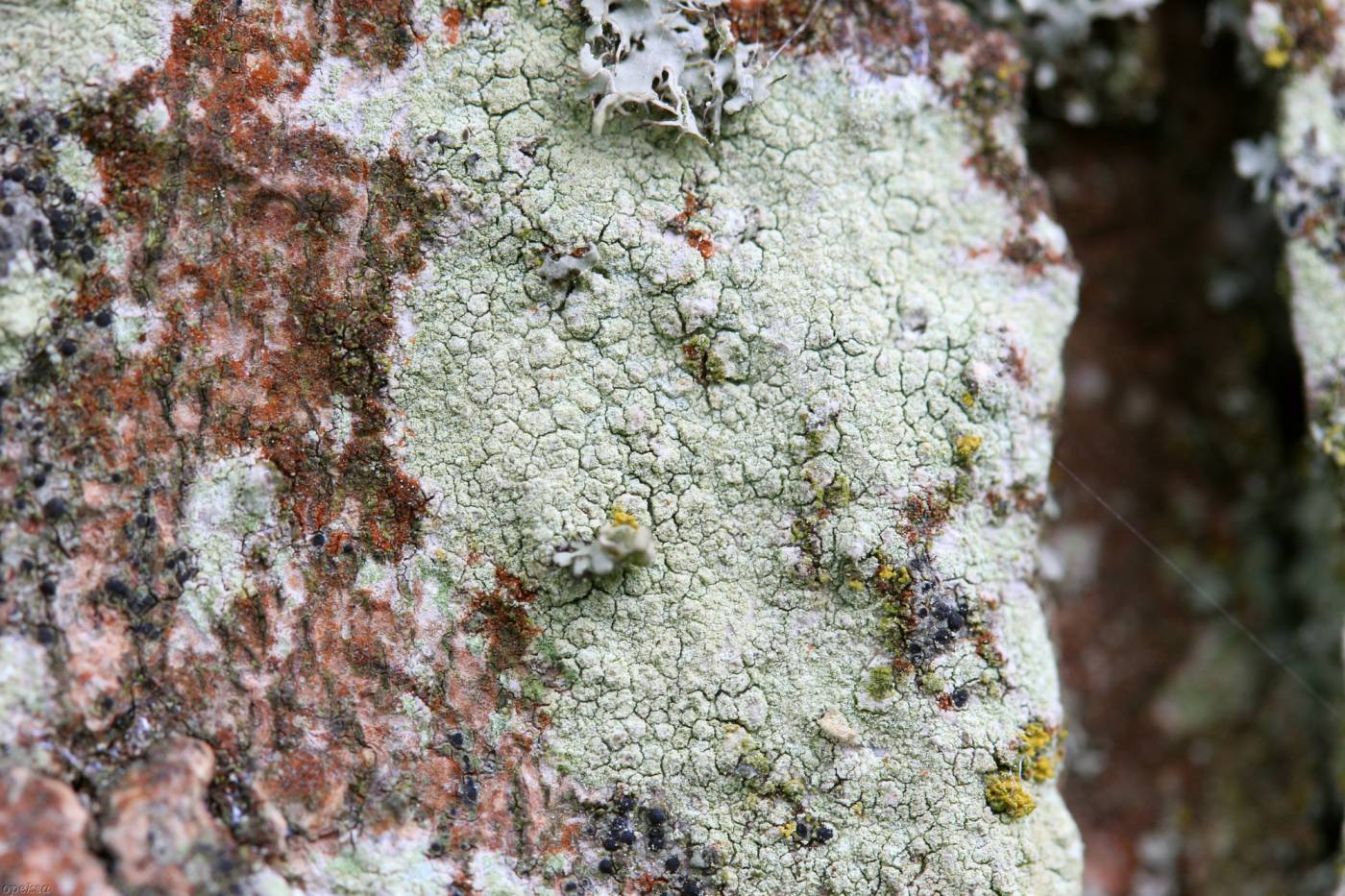A common representative of sorediate and usually sterile lichens, which can be found in forests and free-standing deciduous trees. It is abundant especially on Acer pseudoplatanus and Quercus sp. It also occurs on wood, especially on hard stumps of conifers, but these forms are often morphologically different. It is abundant in the temperate zone of the northern hemisphere, but data also come from the southern hemisphere. This Lecanora has been reported from almost the entire territory of the Czech Republic, with the exception of the highest locations. It is problematic to distinguish it from similar species L. compallens, L. ecorticata, L. stanislai and some members of the genus Lecidella. It is usually necessary to test the presence of xanthones, which, however, are often present in shady localities only in difficult-to-detect amounts. Therefore, misidentifications can easily occur.
Literature: Guzow-Krzemińska B., Łubek A., Malíček J., Tønsberg T., Oset M. & Kukwa M. (2017): Lecanora stanislai, a new, sterile, usnic acid containing lichen species from Eurasia and North America. – Phytotaxa 329: 201–211.
taxonomic classification:Ascomycota → Lecanoromycetes → Lecanorales → Lecanoraceae → Lecanora
Red List (Liška & Palice 2010):LC – least concern
Occurrence in the Czech Republic
All records: 1188, confirmed 861. One click on a selected square displays particular record(s), including their source(s).


